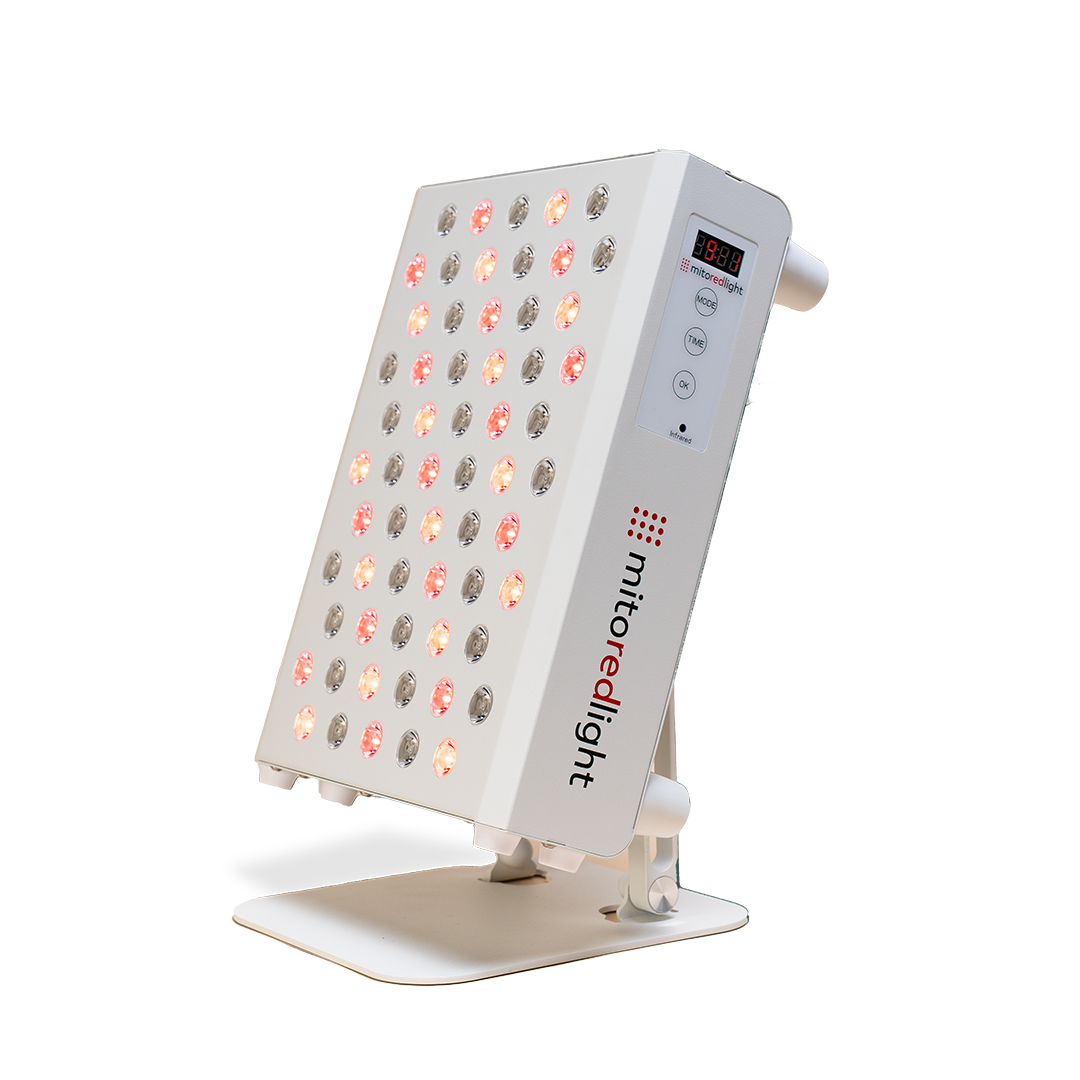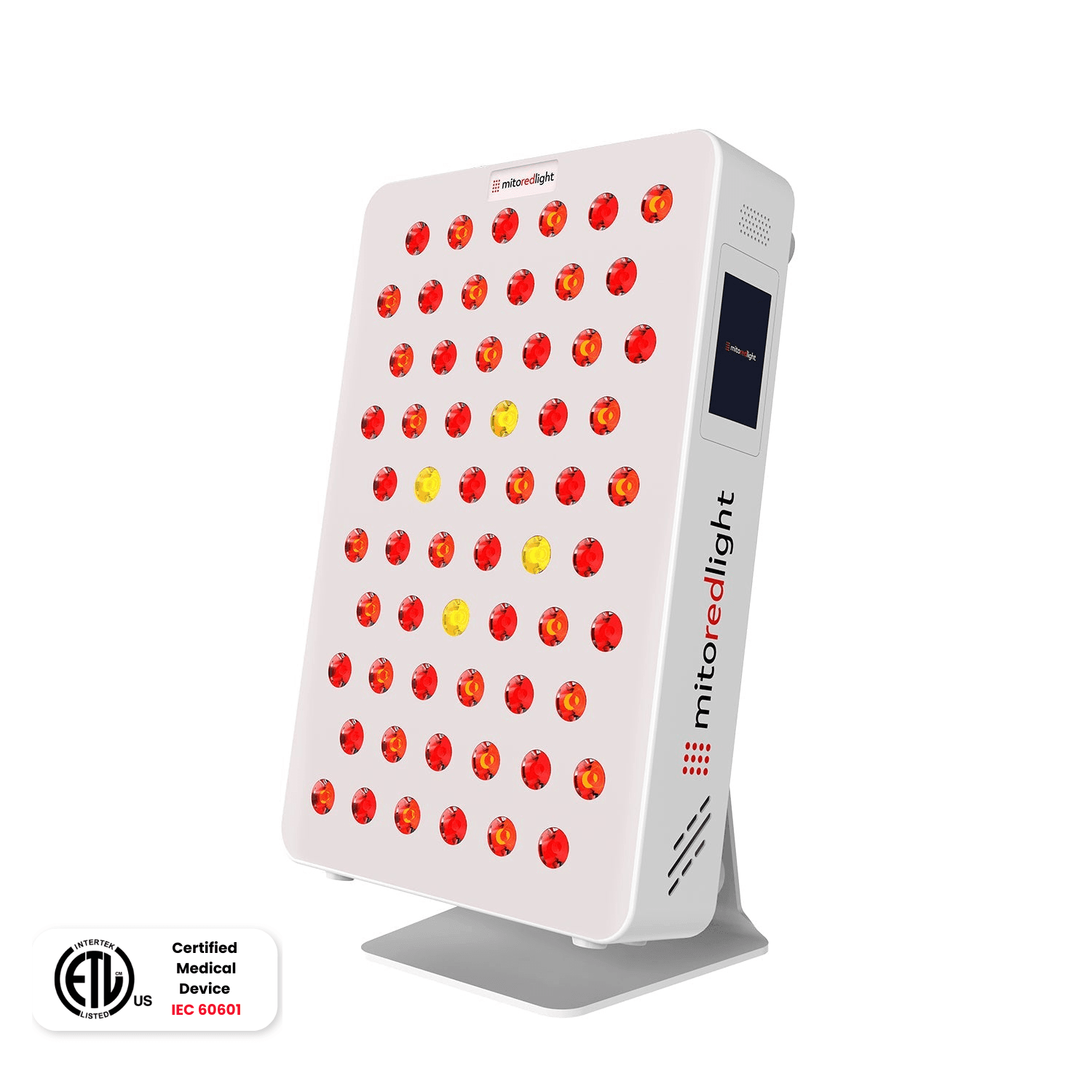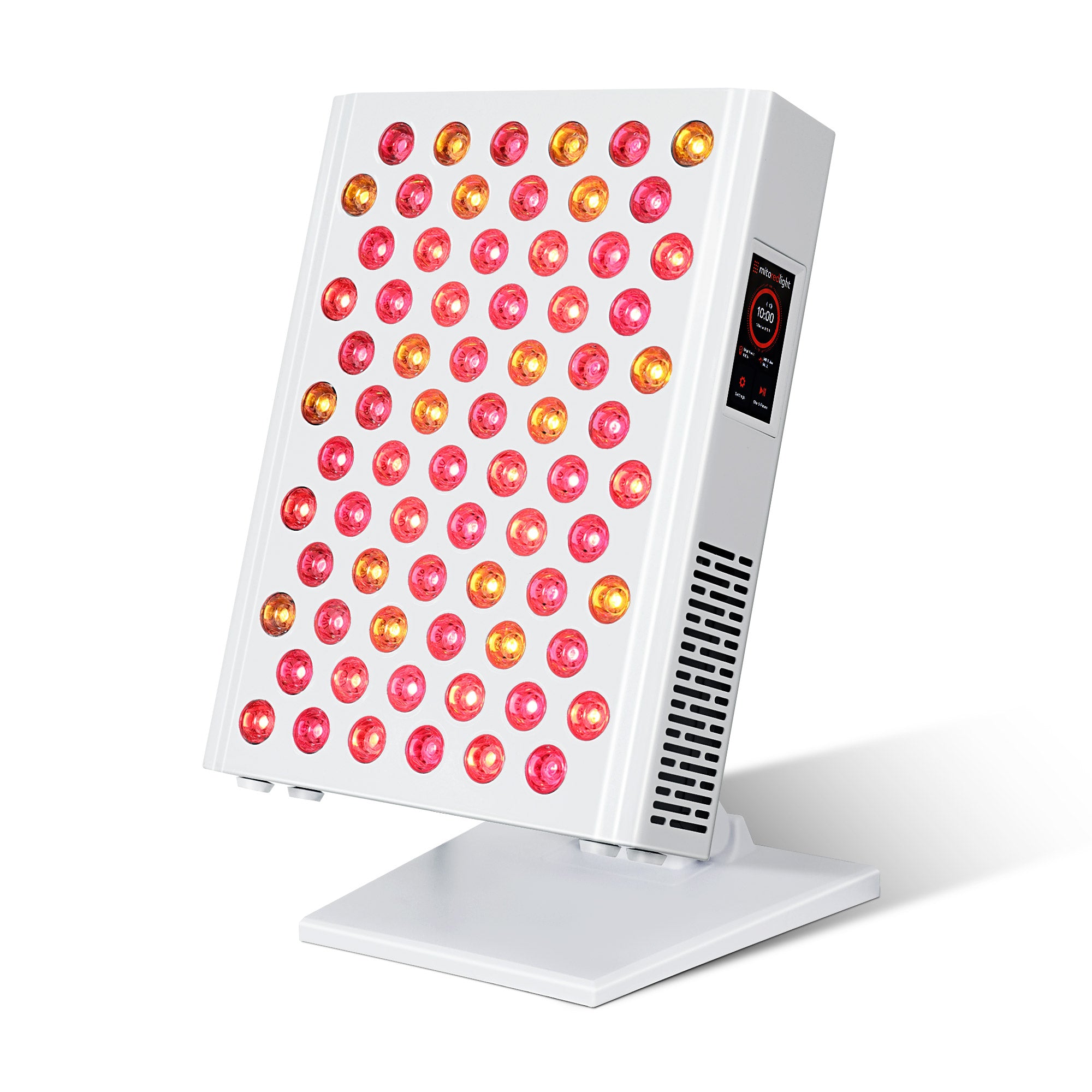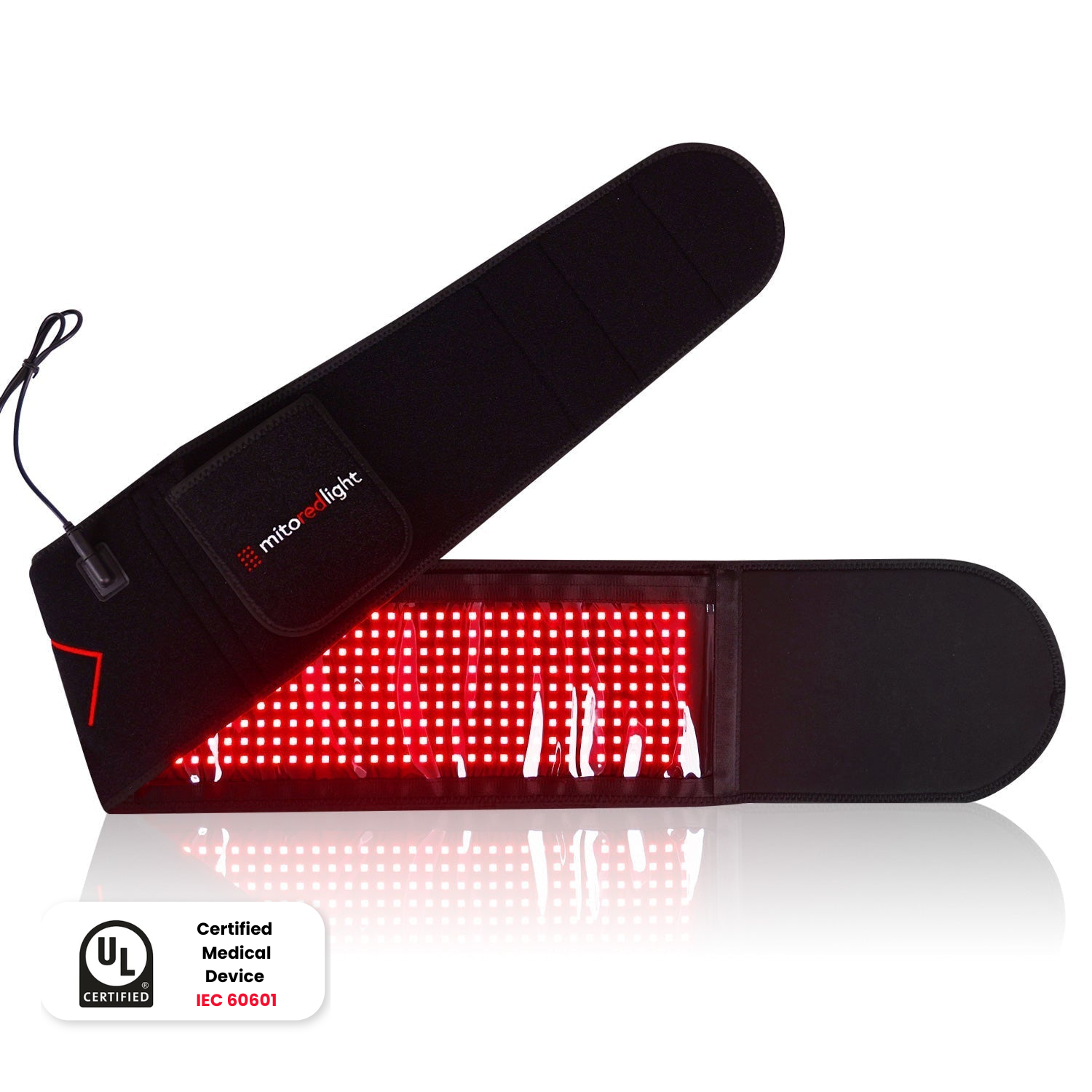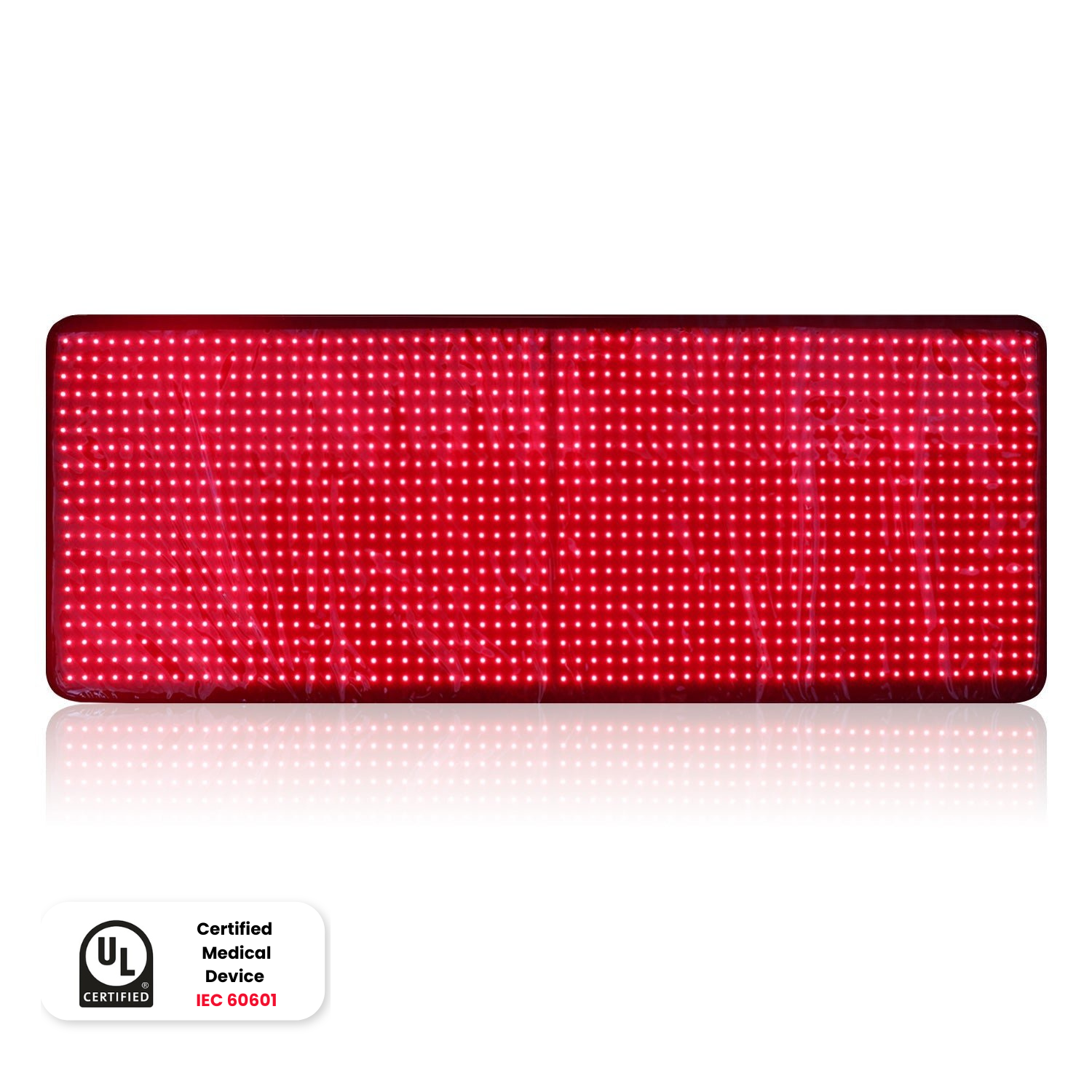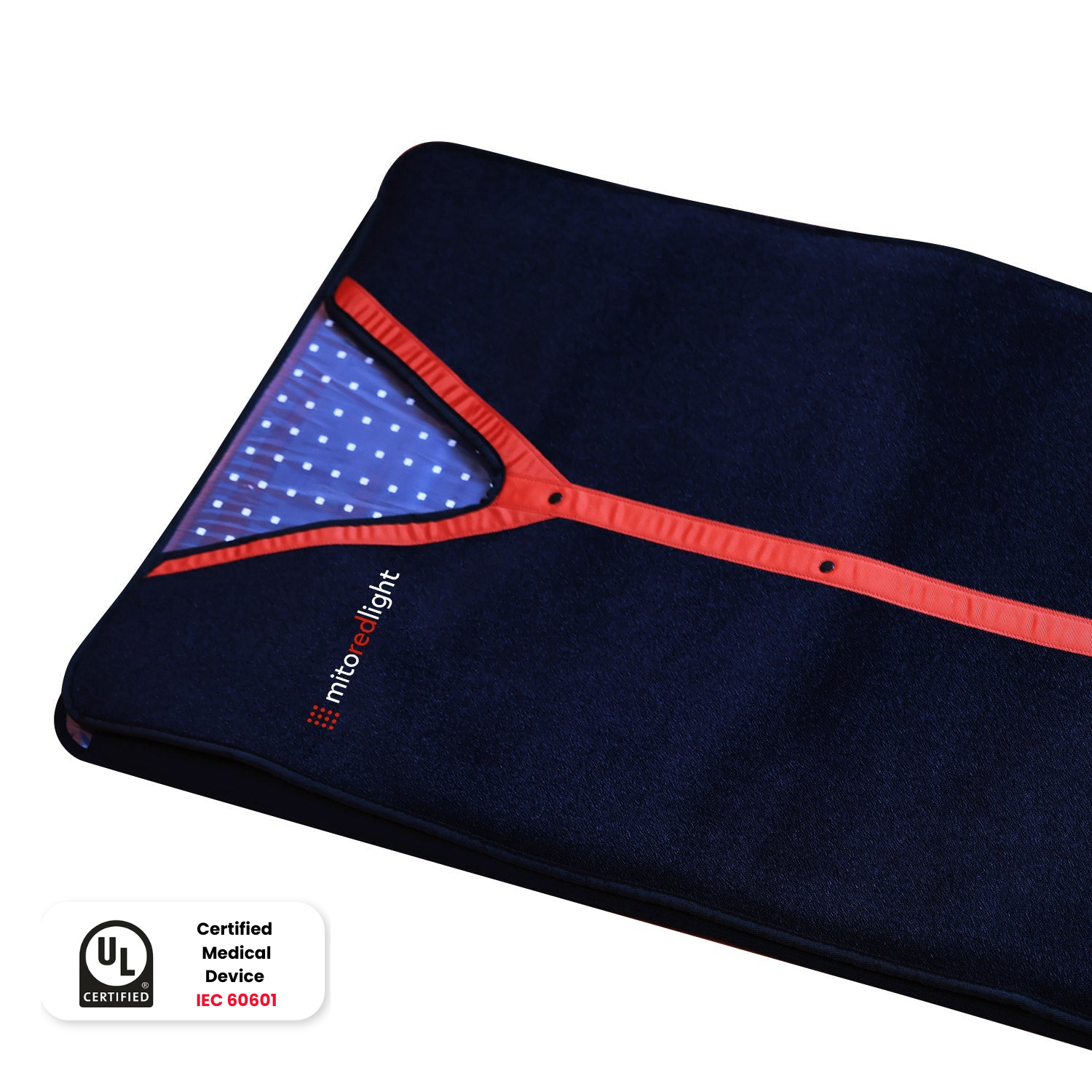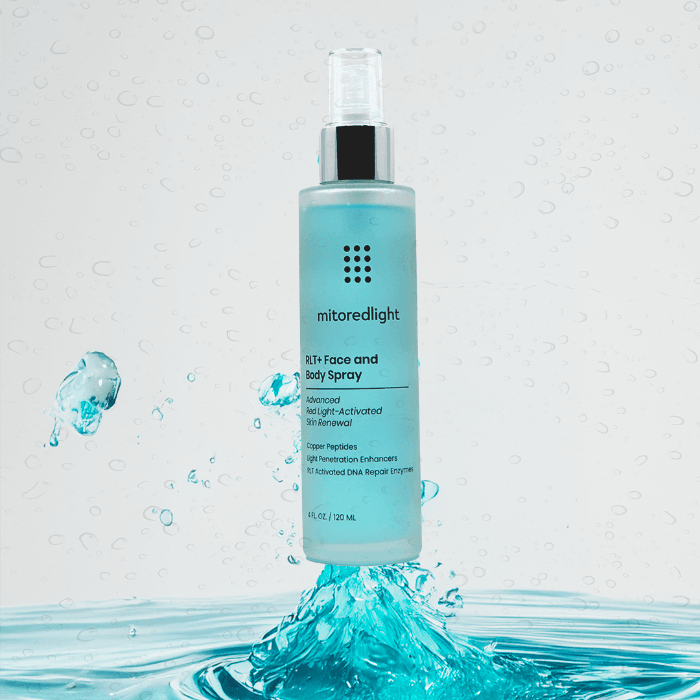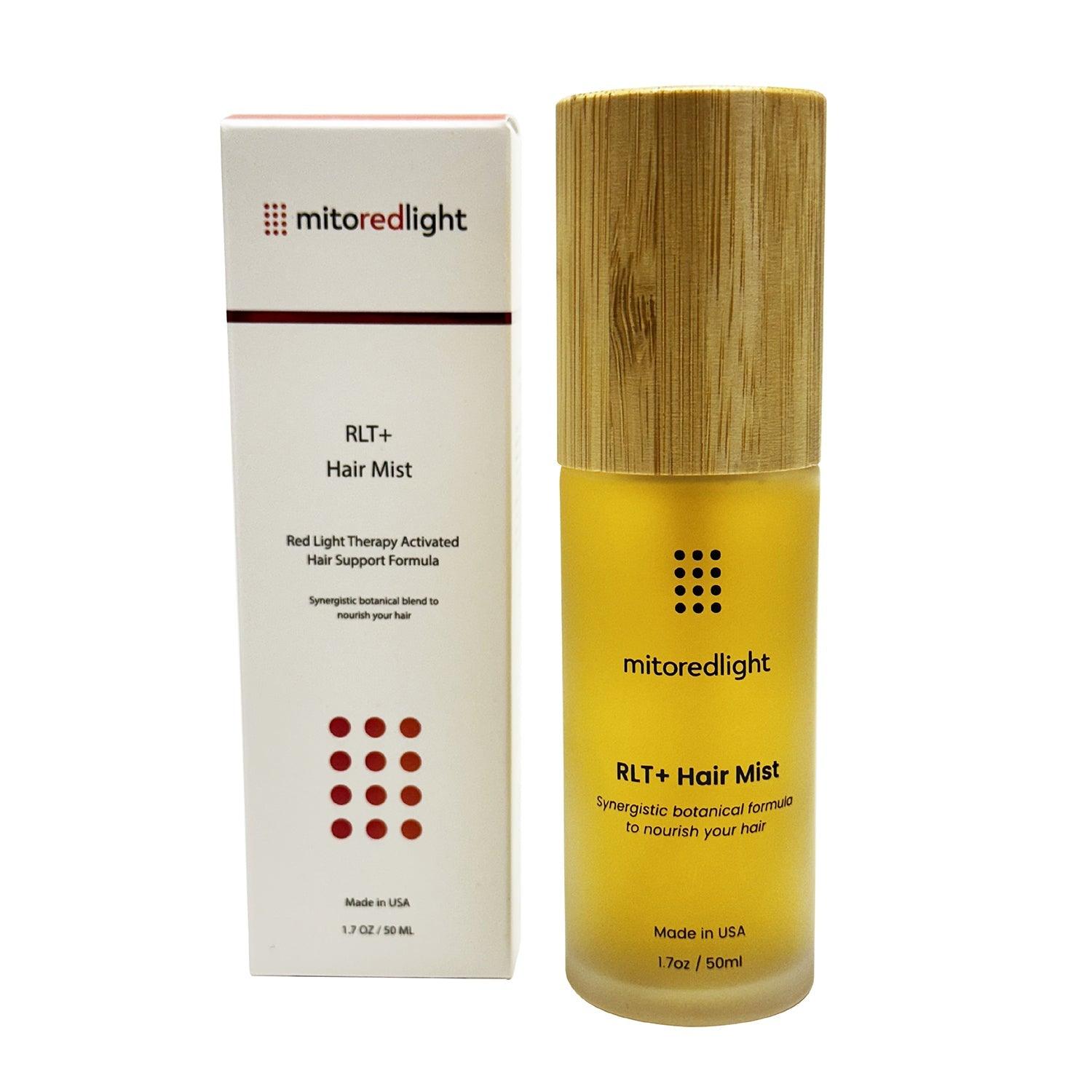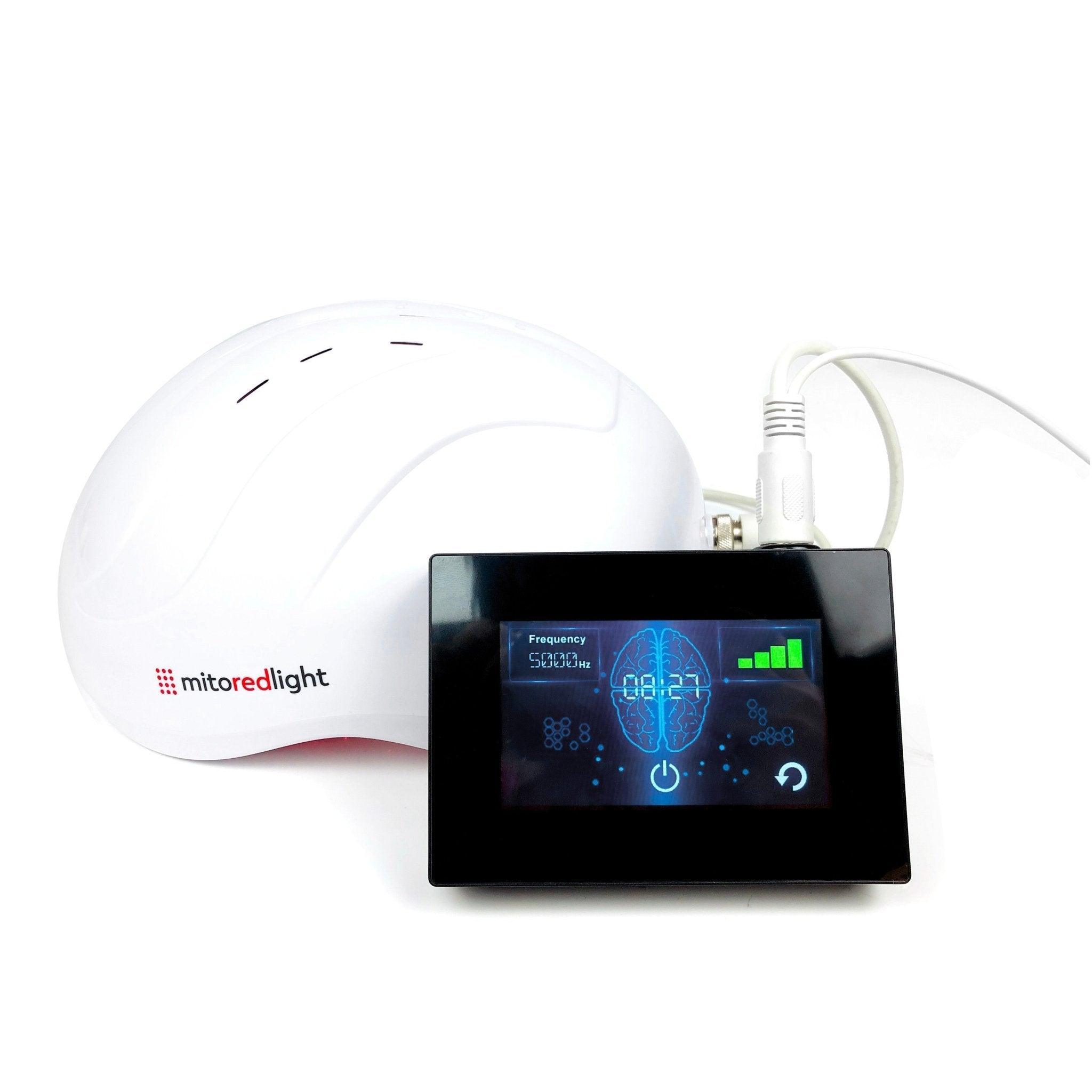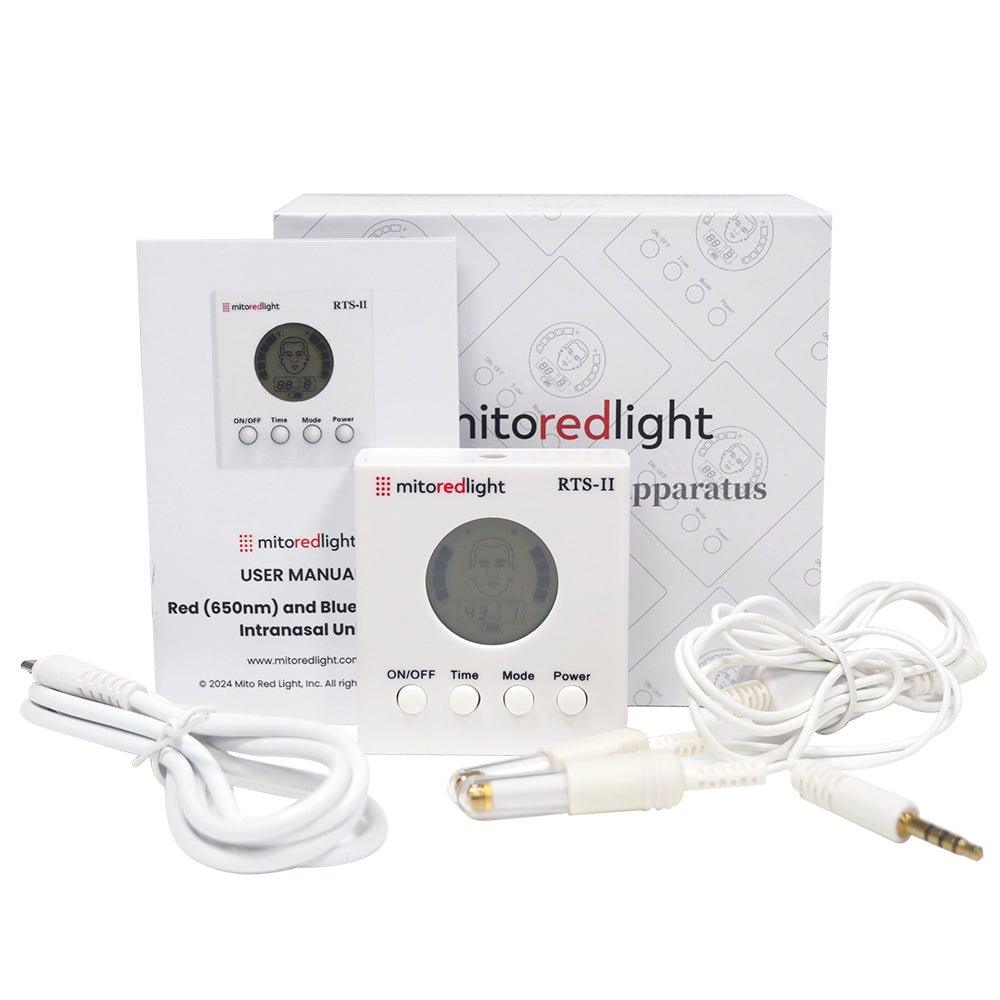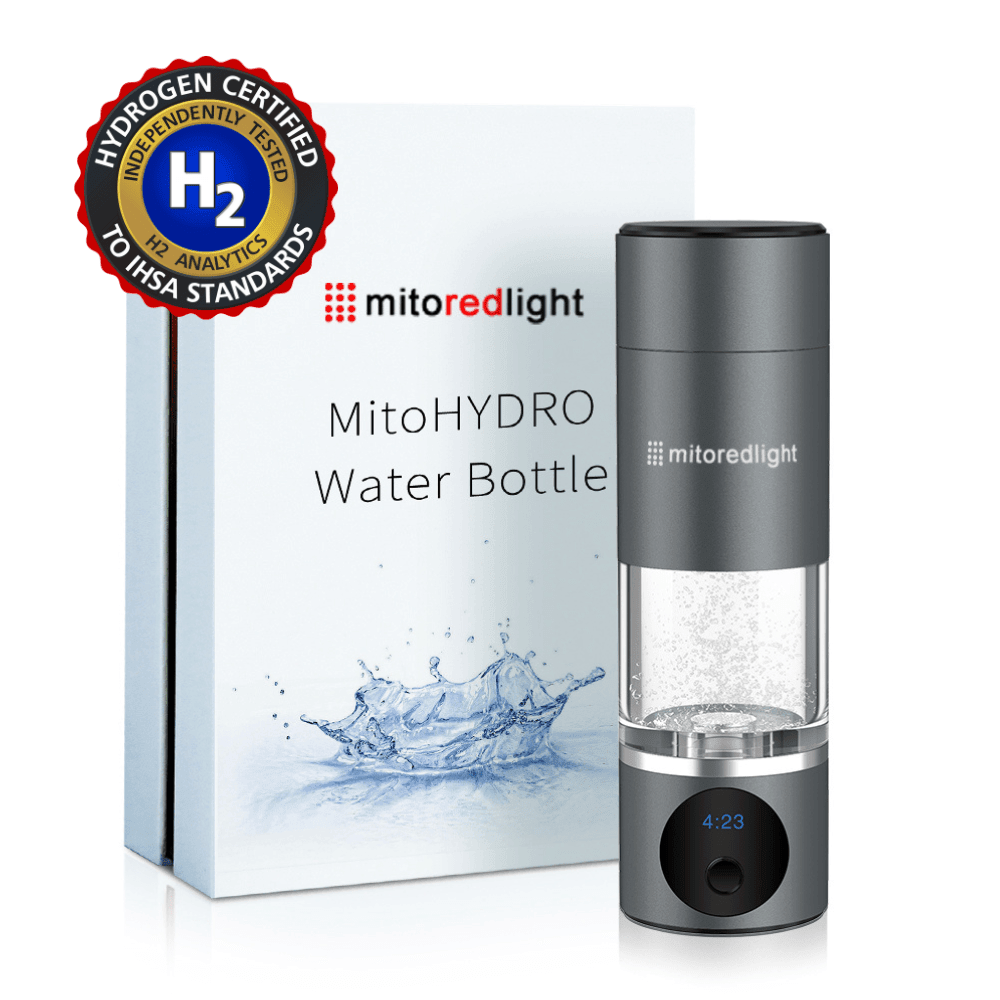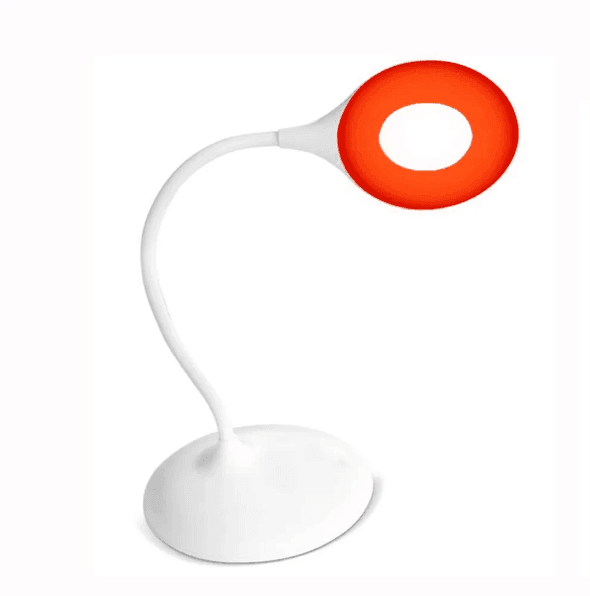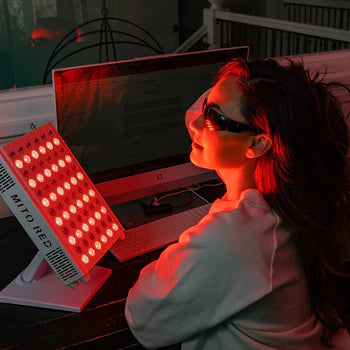DISCLAIMER: Mito Red Light devices are Class II wellness devices aimed at affecting the body through topical heating and supporting cellular function. The information provided in this article and on this site is for educational purposes only and is not intended to imply effectiveness of Mito Red Light devices for any specific application. The information provided in this article and on this site is not intended to diagnose, treat, cure, or prevent any disease, is not a substitute for consultation with a licensed medical provider and should not be construed as medical advice. Click here to read our article on potential contraindications of red light therapy..
Table of Contents
- What is MitoADAPT?
- The Science Behind Red Light Therapy Wavelengths
- Which Wavelengths are Best?
- The Optical Window
- Wavelength Research is in its Infancy
- Red Light
- Near Infrared Light
- The MitoADAPT Approach
- Adaptable Wavelength Modes
- Outcome Tracking Application
- Summary
Mito Red Light is proud to announce the release of a new red light therapy technology that is set to optimize red light therapy to best address individual people’s needs. MitoADAPT is a new red light therapy panel that represents the cutting edge of technology and the future integration of red light therapy with personalized performance tracking software.
Red light therapy is a modern way of promoting health and wellness using specific wavelengths of light that are thought to stimulate energy production in the cells. Stimulating energy in cells and reducing inflammation can help several different health benefits to be realized.
Red light therapy is used for a variety of reasons, with most of these reasons related to decreased inflammation or increased energy. People use red light therapy to improve the quality of their skin, speed the healing after a workout or when an injury occurs, improve the quality of their sleep, and reduce joint pain. The effects of red light therapy are still an active area of research, and more potential uses of red light therapy are still being discovered.
What is MitoADAPT?
MitoADAPT is an innovative approach to red light therapy technology that has two primary features. First, MitoADAPT uses an array of four different types of LEDs that allow for eleven different combinations of wavelengths to be used. Secondly, MitoADAPT integrates with a smartphone app that can be used to track the outcomes of red light therapy treatments and determine which wavelength modes are reported as most effective.
The unique features of MitoADAPT allow users to determine which combinations of wavelengths are having the greatest impact on helping them reach their goals. This enables them to optimize their sessions, ensuring that they will get the maximum benefit.
The Science Behind Red Light Therapy Wavelengths
Red light therapy is a relatively new area of health research, only first becoming recognized as a potential method of treatment during NASA research in the mid-1990s. While red light therapy is still in its infancy, there is a growing body of research supporting its use and explaining how it actually causes positive health effects.
Research suggests that the effect of red light therapy primarily targets mitochondria, subcellular organs that are responsible for producing energy. Mitochondria also play a role in controlling inflammation and regulating each cell’s lifecycle.
The way that red light therapy interacts with mitochondria is thought to be through a molecule called cytochrome C oxidase. All molecules absorb specific wavelengths of light. Cytochrome C oxidase is known to absorb red and infrared wavelengths of light and is an essential component of energy production in the mitochondria. Cytochrome C oxidase stimulation is currently the best explanation for why people see health benefits when using red light therapy.
Which Wavelengths are Best?
Red light therapy actually uses two different types of light, red light, and infrared light. Infrared light may also be referred to as near-infrared light (NIR) to further specify which type of infrared light is being used. Red light has a wavelength of about 620nm (nanometers) to 750nm. NIR has a wavelength of 750nm to 1200nm.
A study in the Journal of Biological Chemistry tested how the wavelengths used in red light therapy affected cytochrome C oxidase. The researchers measured cytochrome C oxidase activity with potassium cyanide present. Cyanide inhibits the action of cytochrome C oxidase, while red light wavelengths potentiate it. This allowed the researchers to compare the effects that different wavelengths of light had on cytochrome C oxidase and measure their effectiveness.
In the Journal of Biological Chemistry article, researchers from the Medical College of Wisconsin and the University of Pennsylvania tested the light with wavelengths of 670nm, 728nm, 770nm, 830nm, and 880nm. The study found that the most effective wavelengths were 670nm and 830nm, while the least effective was found to be 728nm.
This study is consistent with many other studies that seem to indicate cytochrome C oxidase is stimulated by red light around the range of 600-680nm and by NIR light around the range of 800-880nm. These values will vary slightly based on the source; however, these two areas of the spectrum seem to be the ranges that work best for stimulating cytochrome C oxidase.
Some sources purport that 660nm and 850nm are the “best” wavelengths for red light therapy; however, this is probably due to the fact that light sources for these wavelengths are more commercially available and thus more commonly incorporated into red light therapy devices.
The Optical Window
One important concept in red light therapy or any form of phototherapy is the idea of an optical window. Just like cytochrome C oxidase absorbs specific wavelengths of light, so do many other molecules in the body. The optical window refers to wavelengths of the light spectrum that are not highly absorbed in the body, making these wavelengths better able to penetrate body tissues than other wavelengths.
Optical windows vary based on the individual; however, the optical window relevant to red light therapy is generally thought to be about 600nm to 1200nm. However, most scientists consider the "optimum" part of the optical window to be ~600nm to 900nm. Wavelengths shorter than this are generally highly absorbed by hemoglobin in red blood cells, while longer wavelengths are generally absorbed by water.

The therapeutic optic window is the absorption coefficient as a function of wavelength for several biologically relevant molecules, where HbO refers to hemoglobin, and HBO2 refers to oxyhemoglobin, as published by Algorri et al. [9].
The most important concept relating to the optical window for red light therapy is non-target tissues that absorb the light used in red light therapy. Above 800nm, adipose tissues, or fat tissues, become more absorbent. This means that someone using primarily infrared wavelengths over an area with a high density of adipose tissue may be less likely to see a positive effect.
Another non-target molecule that is within the optical window for red light therapy is melanin. Melanin is a skin pigment that gives the skin its darker color and impacts infrared wavelengths more than red wavelengths. This means that someone with darker skin pigmentation, either due to their genetics or frequent exposure to UV light, may find red wavelengths to be more impactful than infrared wavelengths. This also could mean that higher light intensity may be necessary to achieve a similar effect to that seen in fair-skinned individuals.
Wavelength Research is in its Infancy
One vital consideration when examining the research behind red light therapy is that research in this new area is still very early, and there is still much that is not known. Any source that makes definitive claims about specific wavelengths within what is understood to work for red light therapy or claims about narrowband vs. wideband light is likely too dogmatic when compared to the wide variety of research that exists.
Red Light
Red light is visible light that has a wavelength of about 620-750nm. Within this range, 600-680nm is thought to be most likely to have a stimulating effect on cytochrome C oxidase. What points within this range are most effective, however, are still debated. Many studies will examine a single point in this range. 660nm is studied frequently in this range simply because LEDs using this source are more readily and more economically available. However, there is also a considerable amount of research looking at 630nm as well.
Another important question that is still unresolved is whether wideband or narrowband red light is better. Narrowband light is light that is very close to a certain value, while wideband light is light that has more variation around a value. For example, 658-662nm would be considered narrowband, while 640-680nm would be considered wideband. All light sources provide some variation from a specific, single wavelength, and the benefit of this variation is still unknown.
Near Infrared Light
Near-infrared (NIR) light has a wavelength of 750nm to 1200nm and is outside of the visible spectrum of light. A NIR light source will not appear to be producing any visible light to the naked eye while on. NIR light that is considered effective for red light therapy generally has a wavelength of 800-880nm. Like red light, it is not definitively known if wideband or narrowband NIR light has any significant difference.
One important difference between red light and NIR light is the depth that these two different types of light will penetrate. The shorter the wavelength of light, the higher energy it has and the less it will penetrate skin and body tissues. This is why short-wavelength, high-energy ultraviolet (UV) light can cause skin cancer, while lower-energy light, like red light therapy, is not thought to cause cancer.
Short-wavelength light, like UV light, only penetrates a few layers of the skin because of its smaller wavelengths. Longer-wavelength light, like red light and NIR light, will penetrate deeper. While both red light and NIR light penetrate deeper than something like UV light, NIR light, will penetrate even deeper than red light due to its longer wavelength. This makes NIR light better for deep applications, like helping with chronic joint pain.
The MitoADAPT Approach
The MitoADAPT is an innovation in the field of red light therapy unlike any other. The approach used by the MitoADAPT panel embraces the uncertainty that currently exists in red light therapy research, allowing multiple different modes and combinations of different red light therapy treatment options.
Adaptable Wavelength Modes
The MitoADAPT uses four different wavelengths of light to provide 11 different modes, allowing for just red light, just NIR light, or a combination of both. These different modes also allow for both a narrower band or wider band of light in both the red and NIR areas of the spectrum.
By offering multiple combinations, the MitoADAPT allows you to personalize red light treatments to best address your specific and individual needs. People using red light therapy treatments will also now be able to adapt their treatments if new research emerges showing what specific wavelengths or combinations of wavelengths work best for a particular application.

To help visualize these modes even more, below are the spectral graphs of the eleven modes from our independent testing data of the MitoADAPT MIN. No other red light therapy product on the market even comes close to offering this kind of flexibility.

Outcome Tracking Application
In addition to adjustable modes, the MitoADAPT also can be connected and controlled by an application on a mobile device. This innovation will allow you (over time) to track which modes you have used and what outcomes you experience while using the MitoADAPT.
Tracking your usage and outcomes offers multiple benefits:
- It helps you to better understand what modes provide you personally with the best results.
- It enables Mito Red Light to offer personalized analytics and recommend customized protocols (after gathering sufficient data from many users).
- With your permission, it could contribute to future red light therapy research and improve medical understanding of what types of red light therapy are most effective.
Our combined multimodal wavelength options and privacy-minded subjective feedback tracking is a tremendous innovation. MitoADAPT allows our customers access to proprietary patent-pending technology on the cutting edge of red light therapy research and ultimately improves their experience with this therapy.
Summary
The MitoADAPT is an unprecedented innovation in the red light therapy industry.
• The patent-pending technology with dual chip multi-wavelength design provides an incredible ELEVEN different possible modes (red and near-infrared wavelength combinations). With the MitoADAPT, you can determine the combination of wavelengths that works best for YOU.
• The MitoADAPT is equivalent to having SEVEN different red light therapy devices in one (typically, you would need to buy individual devices to be able to deliver wavelength combinations found in Modes 1-6 and 11).
• The Mito Red Light mobile app not only allows you to control your device from your mobile device, but it also allows us to systematically gather subjective feedback, which can lead to a better understanding of what works both at an individual level and at an aggregate level. This data has the potential to both better inform future research and to also help drive data-driven customized protocols.
The MitoADAPT is THE FUTURE of red light therapy.
Click below to see the MitoADAPT device options.

